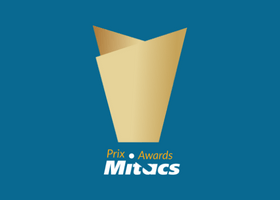When Norman Silber, a summer resident in Kingsboro, began delving into the world of biotechnology he knew it wouldn’t be straightforward.
In fact, it has been 15 years since the idea to bring to market a way of imbedding an antiseptic into piercing instruments first came to him.
“It’s a story that started with my daughter,” Mr Silber said.
“When she was 11-years old she was in the back seat of the car and like many pre-teen girls she had had her ears pierced,” he said. The piercing led to an infection and Michaella subsequently commiserated as to why she had to go through the “rigmarole” of dealing with it multiple times.
Basically Michaella asked why someone couldn’t invent something that treats infection from the inside out.
Fast forward a few years and after some research Mr Silber, a law professor from New York, teamed up with his lifelong friend, cardiologist Marc Nathan and Michaella to form BioPierce Canada Ltd, based out of the Silber’s summer home.
The team is exploring the idea of expanding on his daughter’s idea to use it in not only human piercing, but also in animals for branding purposes and microchip implants.
By no means would they have been able proceed without Mitacs, a government funded non profit organization whose mandate is to pair start up companies with researchers, and UPEI’s School of Sustainable Design Engineering.
“We couldn’t be happier, the expertise we needed was right there at UPEI,” Mr Silber said of the work of Assistant Professor Ali Ahmadi and his students.
Professor Ahmadi is equally enthralled with the research, in part because the outcome will have real life benefits.
“The main problem they are addressing is that around 30 per cent of piercings lead to infections and what we are exploring is to develop a technology that can encapsulate these piercing studs or pins with biomaterial that have drugs in them and as they biodegrade they release the drugs into the body and prevent infection,” he said.
The UPEI facility is the newest engineering program in Canada and has the very latest in 3D printing technology.
“The main challenge from an engineering point of view is to develop a system that allows you to make any shape of these sleeves in any dimension you need,” Mr Ahmadi added.
The system is now at the stage where they are ready to start printing and testing the sleeves to see how they react when put through the piercing gun. The next stage is to add the medication.
These are expected to be ready for field testing by April of 2018.
Professor Ahmadi is one of very few Canadians working in the field of bio printing, which made him stand out as a research candidate when Matics was matching Mr Silber’s company with a researcher.
“Mitacs partners with business, academia, and government to bring the research community together to create a more innovative and productive country. Together, by combining expertise, knowledge, and resources, we are able to contribute to Canada’s long-term health and prosperity.” Alejandro Adem, CEO and Scientific Director said.
Professor Ahmadi said there will be long term benefits which will go beyond finding a solution for piercing infections.
“The very same technology we are using to develop this system has applications in many different fields including drug discovery, developing implants and many other medical applications,” he said.
It is also a unique training opportunity for his students.
Mr Silber said it has definitely been a learning curve for him as well.
“For us it’s a brave new world,” he said, describing how the whole process so far has left him with an appreciation for just how complicated inventions are.
Still, the researchers are excited to see the possibilities.
The business is based in PEI rather than the US because Mr Silber feels PEI is just as much home as New York. Also the initial involvement of the PEI Bioalliance was a crucial part in getting the idea off the ground.
By: Charlotte MacAulay













